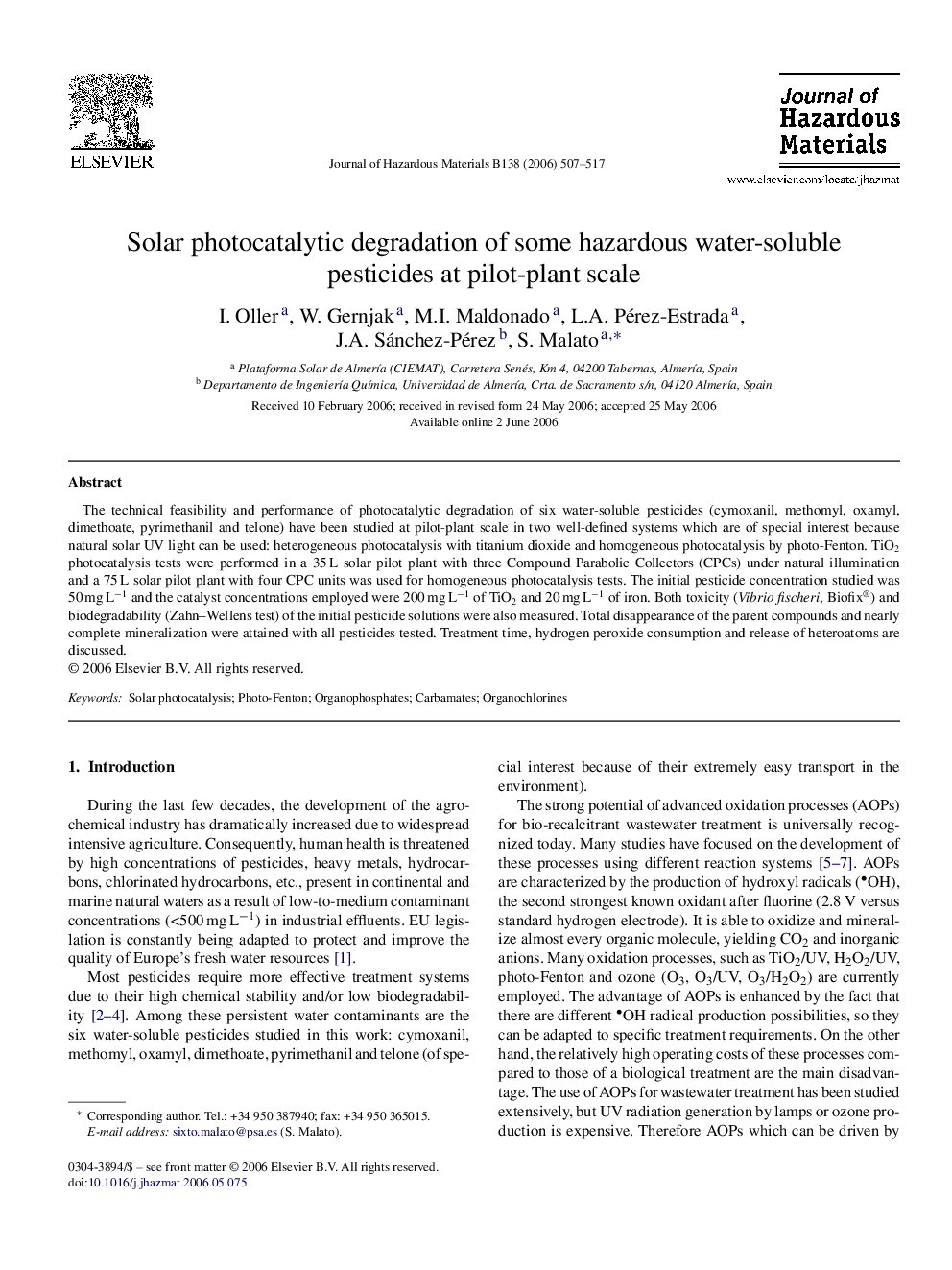| Article ID | Journal | Published Year | Pages | File Type |
|---|---|---|---|---|
| 585061 | Journal of Hazardous Materials | 2006 | 11 Pages |
Abstract
The technical feasibility and performance of photocatalytic degradation of six water-soluble pesticides (cymoxanil, methomyl, oxamyl, dimethoate, pyrimethanil and telone) have been studied at pilot-plant scale in two well-defined systems which are of special interest because natural solar UV light can be used: heterogeneous photocatalysis with titanium dioxide and homogeneous photocatalysis by photo-Fenton. TiO2 photocatalysis tests were performed in a 35 L solar pilot plant with three Compound Parabolic Collectors (CPCs) under natural illumination and a 75 L solar pilot plant with four CPC units was used for homogeneous photocatalysis tests. The initial pesticide concentration studied was 50 mg Lâ1 and the catalyst concentrations employed were 200 mg Lâ1 of TiO2 and 20 mg Lâ1 of iron. Both toxicity (Vibrio fischeri, Biofix®) and biodegradability (Zahn-Wellens test) of the initial pesticide solutions were also measured. Total disappearance of the parent compounds and nearly complete mineralization were attained with all pesticides tested. Treatment time, hydrogen peroxide consumption and release of heteroatoms are discussed.
Related Topics
Physical Sciences and Engineering
Chemical Engineering
Chemical Health and Safety
Authors
I. Oller, W. Gernjak, M.I. Maldonado, L.A. Pérez-Estrada, J.A. Sánchez-Pérez, S. Malato,
